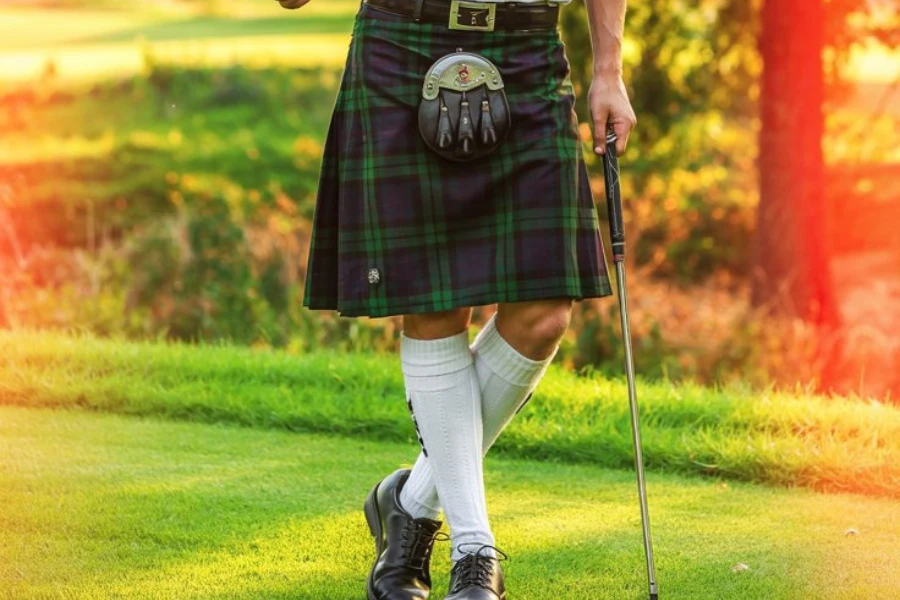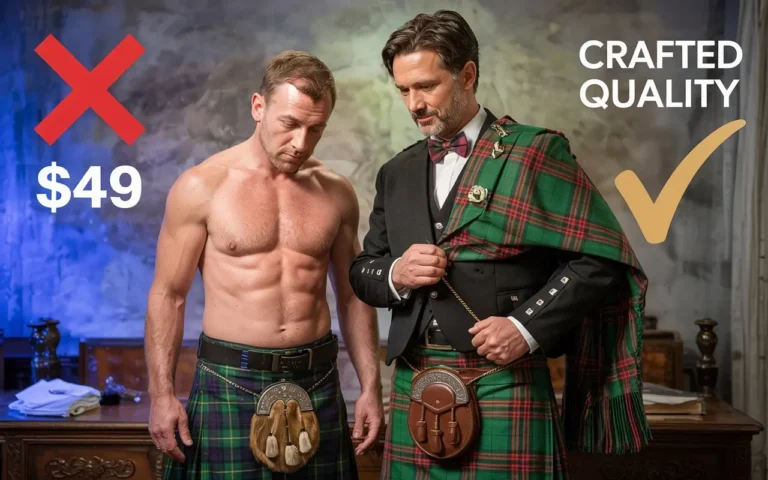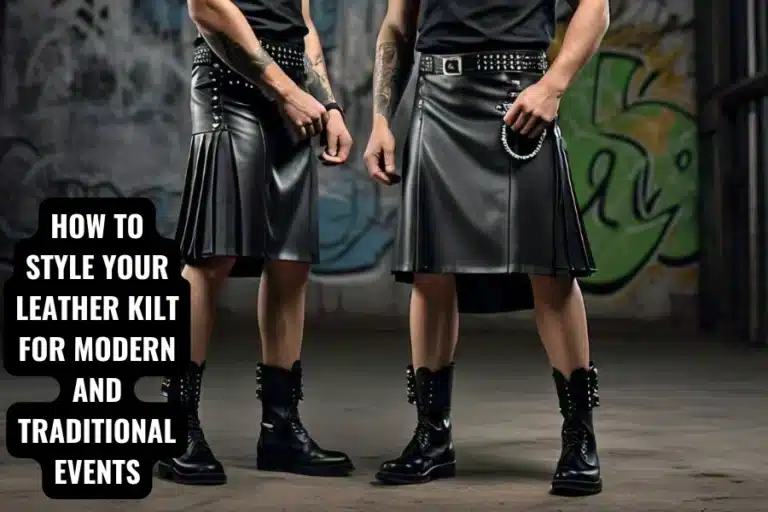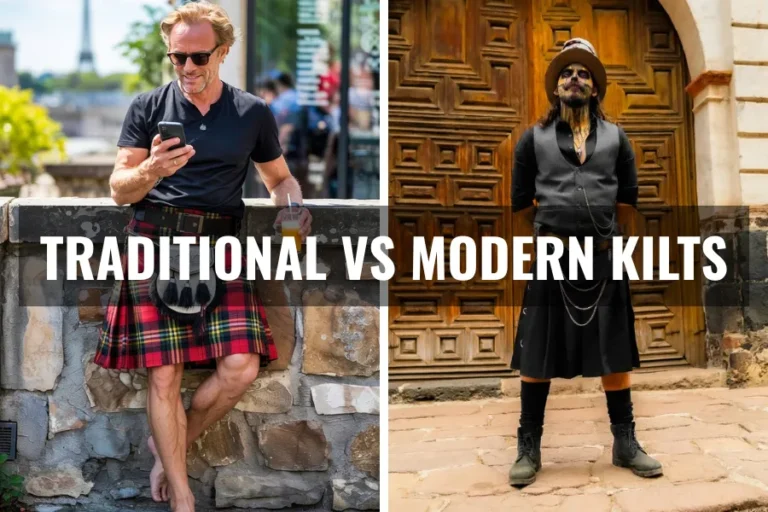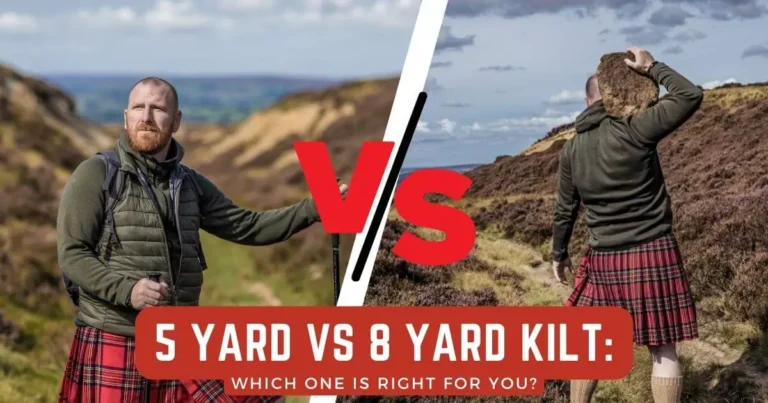Scotland Outfit: Exploring Traditional Attire And Modern Style
What Makes a Scotland Outfit Feel Truly Scottish?
When you hear “Scotland outfit,” what’s the first thing that comes to mind? For most people, it’s probably a kilt. Maybe in red tartan. Maybe with a sporran swinging in front and a bit of plaid over the shoulder. It’s such an iconic image, isn’t it? But like most things that seem simple on the surface, there’s actually a lot going on underneath.
The idea of traditional Scottish clothing is layered—historical, regional, even seasonal. And while kilts are a huge part of it, they’re not the only thing. There’s a full world of garments, customs, and variations depending on where you are, what you’re doing, and, frankly, how traditional you actually want to be.
The Backbone of Scotland Traditional Attire:
Let’s start with the basics—Scotland traditional attire usually revolves around the Highland dress. That means kilts for men (though not only men wear them now), made of wool in specific tartan patterns that often represent clans or families. The colors and designs aren’t just decorative—they can carry generations of heritage, even if most people nowadays just pick one they like.
But it’s not just the kilt. There’s the Prince Charlie jacket (a formal black evening jacket), the waistcoat, hose (those tall socks), ghillie brogues (lace-up shoes with long laces that tie around the leg), and of course the sporran—that little pouch in front because, well, kilts don’t have pockets. Some wear a sgian-dubh, a small ceremonial dagger tucked into the sock. Not that anyone’s using it, but it’s part of the look.
For colder days—and Scotland has plenty of them—people might drape an arasaid or a heavier wool cloak over the shoulder. That adds drama and warmth, both useful in their own ways.
Everyday Traditional? Not Quite
Here’s the thing though—nobody’s walking around Edinburgh in full Highland regalia on a regular Tuesday. These outfits are mostly for weddings, formal events, festivals like Hogmanay or Burns Night, or when you’re part of a ceremony. So calling it Scotland clothes traditional feels accurate, but maybe a bit misleading if you imagine everyone dressing like that every day. The reality is a lot more blended.
Still, you do see kilts more often than you might think. At sporting events. At schools. Even in pubs sometimes, especially around big matches or national celebrations. There’s a pride that comes with wearing something so strongly tied to identity, even if it’s just once in a while.
What About Scotland Golf Outfit?
Now here’s an interesting offshoot. The Scotland golf outfit deserves a bit of love. After all, golf was born in Scotland, and it’s still a huge part of the country’s culture. Think St. Andrews, Royal Dornoch—these are sacred grounds for golfers worldwide.
Traditionally, golfers in Scotland didn’t wear modern moisture-wicking polos or baseball caps. They wore wool trousers or tweed knickers, argyle socks, vests, and flat caps. It was a very different vibe, almost like countryside elegance. Some still do, especially during tournaments that celebrate golf’s history. And it’s not uncommon to see tartan golf pants as a nod to heritage, even if the rest of the outfit is modern.
That said, practicality has taken over in most golf clubs. Today’s Scottish golfers wear much the same as their international peers. But there’s still something undeniably charming when someone shows up in a modern-day take on a traditional Scotland golf outfit, maybe with a plaid vest or classic cap. You feel like you’re stepping back in time, if only for 18 holes.
Wearing Tartan Kilts as a Scotland Golf Outfit
Interestingly, more golfers in Scotland—and even visiting players—are embracing the idea of wearing a tartan kilt as their golf outfit. It’s bold, sure, but there’s something classic about walking the links in a garment that feels as old as the sport itself.
The practicality of a kilt might surprise you. Good tartan kilts are made from acrylic wool, allowing easy movement during a swing. Plus, there’s a certain pride (and maybe a bit of playful bravado) that comes with striding down the fairway, kilt swinging with every step.
Some tournaments even host “Kilted Golf Days,” encouraging players to swap trousers for tartan. It’s not required, of course, but when you see groups of golfers wearing traditional Scotland golf outfits with full kilts, it’s hard not to smile.
Not everyone feels comfortable going full kilt on the course, and that’s understandable. But for those willing to try? It’s an experience unlike any other. It feels… well, a little rebellious and completely authentic at the same time.
Women’s Traditional Clothing: Subtler, But Just as Rich
When talking about Scotland traditional attire, it’s easy to get caught up in the male-centric Highland wear. But women’s traditional dress is just as intricate. Historically, women wore ankle-length tartan skirts or full dresses with fitted bodices, often in darker, muted tartans. Shawls and wraps played a big role—again, warmth and style often go hand in hand in colder climates.
Some historical outfits included linen chemises, wool skirts, and a kind of plaid wrap called an arisaid, pinned over the shoulder. These garments weren’t just practical—they told stories about the wearer’s community, status, and even marital situation. Today, you might see women in tartan sashes at events, or full-length tartan skirts paired with modern blouses. There’s flexibility, but tradition always lingers in the background.
A Living Tradition, Not a Costume
One thing to be cautious of: treating traditional Scottish clothing like a costume. That sounds obvious, but sometimes it can slip into caricature—especially in movies or tourism ads. The best Scotland outfit isn’t one that checks all the boxes perfectly; it’s one that feels connected to the moment and setting. Whether it’s full Highland dress for a wedding or just a tartan scarf worn on a rainy walk, the spirit of the tradition is more important than strict accuracy.
That’s not to say purists don’t exist—they do, and they’re great at keeping the details alive. But for most people, it’s more about expressing heritage than replicating history. And that’s okay.
Blending Old and New
Interestingly, there’s been a wave of modern reinterpretations in recent years. Designers have started playing with tartan in unexpected ways—streetwear, fashion runways, hybrid kilts with pockets and zippers, even tartan sneakers. Not everyone loves that (some see it as disrespectful), but others argue it’s how traditions stay alive. You adapt or you fade.
I once saw a guy in Glasgow wearing a sleek black utility kilt with Doc Martens and a denim jacket. Not traditional at all, but somehow it worked. That’s the thing with Scotland traditional attire—it doesn’t always stay in the box you expect it to.
Final Thoughts
So, what is a “true” Scotland outfit? It depends. Sometimes it’s full Highland regalia, carefully chosen for a formal event. Other times, it’s a kilt worn with a football jersey, or a tartan scarf passed down through generations. It might even be a pair of plaid trousers on the golf course, nodding to the past while walking through the present.
Traditions are living things. They grow, shift, contradict themselves, and show up in unexpected places. And maybe that’s the point—they’re not meant to be frozen in time, but worn, shared, and reshaped with each generation.




